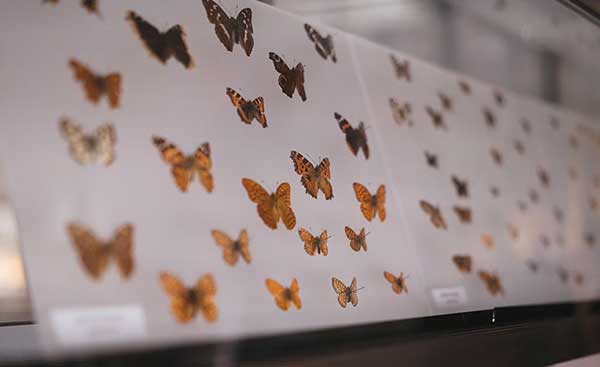Butterflies are more than just colorful insects—they serve as valuable models in biological research. Their life cycle, marked by distinct phases, makes them ideal subjects for studying growth, cellular changes, and genetic control during development. For students planning a capstone project in biology or a related field, laboratory-based studies involving butterflies can offer structure, relevance, and research potential.

Developmental biology examines how organisms grow and change from a single cell to a fully developed form. By observing metamorphosis in butterflies, students can explore tissue regeneration, hormone regulation, and gene expression in real time. These processes are not only observable but often parallel those in more complex organisms.
Structuring a Capstone Project Around Butterfly Metamorphosis
Designing a capstone project around butterflies requires a balance between biological focus and practical lab work. The butterfly’s complete metamorphosis—from egg to larva to pupa to adult—offers multiple entry points for investigation. This structure also aligns well with the timelines of academic semesters.
Projects may involve:
- Monitoring hormone levels during metamorphosis.
- Studying the role of imaginal discs during tissue formation.
- Investigating environmental triggers for pupation.
- Examining gene expression in developing wings.
Students who need help developing or writing such projects can hire a capstone project writer on DoMyEssay. This can be helpful when balancing multiple academic demands or when looking to improve research structure and clarity.
Why Butterflies Are Ideal for Developmental Studies
Butterflies, particularly species like Danaus plexippus (monarch) or Vanessa cardui (painted lady), are frequently used in laboratories because of their short life cycles and visible changes at each stage. This makes it easier to track development without requiring extended time frames or high-cost equipment.
Here’s a breakdown of why butterflies are suitable for student-led research:
| Feature | Research Value |
| Observable life stages | Easy to monitor without invasive procedures |
| Clear tissue transformation | Supports visual and molecular analysis |
| Hormonal regulation | Allows study of endocrine system in insects |
| Genetic accessibility | Techniques like PCR can target developmental genes |
| Short life cycle | Fits academic schedules and allows replication |
A focus on butterflies can also serve as a starting point for advanced work in entomology, genetics, or ecology.
Lab Techniques and Equipment for Butterfly Projects
Conducting developmental biology research with butterflies doesn’t require an advanced lab. However, certain tools and materials are essential for data collection and analysis.
Here’s a basic checklist:
- Growth chambers or controlled containers for maintaining humidity and temperature.
- Microscopes to observe tissue development in larvae and pupae.
- Dissection tools for examining internal structures at different stages.
- RNA extraction kits and PCR machines for gene expression studies (for more advanced labs).
- Timelapse cameras for recording molting or pupation events.
While not all labs will have access to high-end genetic analysis tools, observational projects can still yield meaningful results, particularly when comparing rates of growth, molting, or behavior across variable conditions like temperature or light exposure.
Funding and Scholarships for Biology Students
Budget constraints often limit the scope of student-led research. However, several funding options exist to support biology-focused capstone projects, especially for those studying in science, technology, engineering, or mathematics (STEM) fields.
Students can explore scholarships for STEM students to help offset research costs such as supplies, equipment, and travel. Applying early in the academic year increases the likelihood of receiving financial support.
In addition to scholarships, universities often provide mini-grants through honors programs, faculty-sponsored labs, or undergraduate research initiatives.
Example Capstone Project Topics
Choosing a topic that aligns with both personal interest and available resources is key. Here are some viable capstone project titles focused on butterfly development:
- “Comparative Analysis of Larval Growth Rates Under Variable Temperature Conditions”
- “Gene Expression Patterns in Wing Development During Chrysalis Stage”
- “Impact of Light Exposure on Pupation Timing in Danaus plexippus”
- “Role of Juvenile Hormone in Regulating Butterfly Metamorphosis”
- “Behavioral Changes in Caterpillars Prior to Pupation: A Quantitative Study”
Each project can be designed to include observation, data collection, analysis, and discussion of scientific implications.
Long-Term Impact of Butterfly-Based Research
While simple in setup, these projects often introduce students to real-world scientific thinking. Understanding developmental stages, analyzing physiological data, and applying statistical tools can all lead to more advanced studies or careers in biology, medicine, or environmental science.
Students may also choose to publish their findings in undergraduate research journals or present them at academic conferences. These efforts not only support their learning but strengthen graduate school applications.




